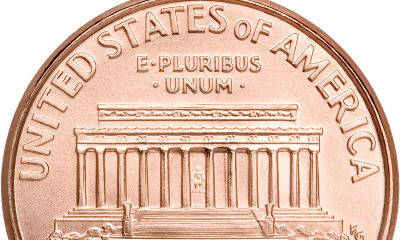Living
Gay, bi men remain key to HIV epidemic
After 30 years of AIDS, many breakthroughs but infection rates on the rise
On June 5, 1981, the U.S. Centers for Disease Control and Prevention published an article in its authoritative journal Morbidity and Mortality Weekly report that experts now consider the first signal that an unprecedented worldwide epidemic had begun.
“In the period of October 1980-May 1981, 5 young men, all active homosexuals, were treated for biopsy-confirmed Pneumocystis carini pneumonia at 3 different hospitals in Los Angeles, California. Two of the patients died,” the MMWR article stated.
“Pneumocystis pneumonia in the United States is almost exclusively limited to severely immunosuppressed patients,” said the article. “The occurrence of pneumocytosis in these 5 previously healthy individuals without a clinically apparent underlying immunodeficiency is unusual.”
It would take another few years before scientists named the condition detected in the men discussed in that MMWR article as Acquired Immune Deficiency Syndrome or AIDS. The name AIDS followed an earlier term used by some researchers and the media – Gay Related Immune Disorder or GRID.
In reflecting on the tumultuous developments surrounding AIDS over the past 30 years, leaders of AIDS advocacy organizations and LGBT activists in the U.S. who lived through the early years of the epidemic say that, to some extent, the MMWR article of June 1981 still has considerable resonance for gay men.
They acknowledge that so much has changed for the better over the past 30 years, including breakthroughs in biomedical research resulting in highly effective drugs that transformed AIDS from a death sentence into a manageable, chronic illness like diabetes.
But AIDS activists also point out that HIV and AIDS continue to disproportionately impact gay men or men who have sex with men (MSM) in the United States and other countries.
And although the perception of AIDS as a “gay disease” has largely receded from the minds of most Americans, AIDS activists say they find themselves in the ironic position of having to remind Congress and state and local governments that more resources and funding are needed for HIV prevention programs targeting gay and bisexual men.
“MSM is the only group for whom, according to the CDC, new infections are still increasing,” said Ronald Johnson, vice president for policy and advocacy for AIDS United, a national group formerly known as AIDS Action.
“So there continues to be a concern that there is not enough targeted prevention resources to MSM, particularly MSM of color and young MSM of all races and ethnicities,” Johnson said.
According to the CDC, while MSM account for about 2 percent of the U.S. population, more than half of all new HIV infections in the U.S. each year (53 percent) occur among MSM. CDC data also show that MSM make up nearly half of all people living with HIV in the U.S. – 48 percent.
CDC figures show that white MSM “account for the largest number of annual new HIV infections of any group in the U.S., followed closely by black MSM,” according to a CDC fact sheet released last month.
“There are more new HIV infections among young black MSM (aged 13-29) than among any other age and racial group of MSM,” the fact sheet says.
The Obama administration, with input from AIDS advocacy organizations, released a National HIV/AIDS Strategy document in July 2010 that, among other things, calls for an aggressive effort to develop better HIV prevention programs targeting MSM.
Johnson and Carl Schmid, deputy executive director of the AIDS Institute, a national advocacy group, praised the administration for developing the strategy document, which they say covers most of the bases needed for addressing HIV prevention programs for MSM.
But the two said the proposals in the strategy document have yet to be fully implemented. They note that delays in its implementation are due, in part, to the U.S. economic situation that has prevented needed increases in federal AIDS funds and severe cutbacks in state and local funding for AIDS-related programs.
Phill Wilson, president and CEO of the Black AIDS Institute, said in a commentary last week in the Washington Informer, a black community newspaper, that he fears the horrors of the AIDS epidemic of the 1980s, when friends and family members watched loved ones die due to a lack of effective medical treatment, could return to some degree in the next few years.
According to Wilson, if the federal government fails to boost funding for the federal-state AIDS Drug Assistance Program (ADAP), low income people who rely on the program to provide them the medications they need keep the AIDS virus in check could become casualties just as their predecessors became casualties years earlier. But this time, he said, an inability to gain access to medicine due to funding shortfalls would be responsible for their fate at a time when effective medicine is readily available.
He called such an outcome “immoral.”
The ADAP program was created under the Ryan White AIDS Care Act to provide life-sustaining drugs for low-income people with HIV and AIDS who are under insured or don’t have any health insurance to help pay for the drugs.
ADAP funding cuts by states and a large increase in the number of people applying for ADAP assistance has resulted in nearly 8,000 people being placed on state waiting lists for the AIDS drugs they need to remain healthy.
The health insurance reform law that President Obama proposed and Congress passed two years ago was expected to relieve the ADAP funding pressure on states when it takes effect in 2014. However, some states that oppose the law have filed lawsuits seeking to prevent its provision requiring all citizens to buy some form of health insurance from going into effect, making its outcome uncertain.
Nearly all AIDS advocacy groups support the law, saying it would strengthen medical care for large numbers of people with HIV/AIDS.
Dr. Anthony Fauci, director of the National Institute of Allergy and Infectious Diseases, an arm of the U.S. National Institutes of Health, has been the leading federal government official monitoring the AIDS epidemic and directing AIDS-related research since the disease burst on the scene in 1981.
In a speech commemorating the 30th anniversary of AIDS at NIH headquarters in Rockville, Md., on Tuesday, Fauci said he’s optimistic that an AIDS vaccine can be developed in the near future.
“We have scientific evidence that a safe and effective HIV vaccine is possible,” he said in a statement released on May 18.
“In 2009, a clinical trial in Thailand involving 16,000 people demonstrated for the first time that a vaccine could safely prevent HIV infection in a modest proportion of study participants,” he said. “Many of the best minds in HIV vaccine science are examining blood samples and data from the Thai trial to learn how the vaccine candidate prevented HIV infections and to consider how it could be modified to be more effective.”
Fauci said NIAID is also optimistic about development within the next few years of effective vaginal and rectal microbicides that can be used to prevent the transmission of HIV during sexual contact.
Fauci and other researchers have also pointed to studies showing the effectiveness to a certain degree of prescribing HIV drugs for use by non-infected people believed to be at high risk for HIV infection, such as men who have sex with men.
Known as pre-exposure prophylaxis, or PrEP, the use of this prevention measure is said to have the drawback of being less effective if people fail to take the drug as required. Some also have expressed concern that people using this prevention method are subject to potential side effects of the drugs and may be discouraged from using condoms, which experts say is one of the most effective methods of HIV prevention.
Events and developments in the early years of AIDS
• 1981: The CDC reports in its June 1981 edition of MMWR and subsequent editions that year that an estimated 170 gay men had succumbed to Pneumocystis carini pneumonia and Kaposi’s sarcoma, a rare skin cancer, over the preceding two years. The CDC studies of these cases cited a serious malfunctioning of the body’s immune system in those who contracted the conditions.
• 1982: Gay Related Immune Disorder, or GRID, became the first name to describe what is now known as AIDS. Cases reached epidemic proportions in the U.S., moving beyond clusters of gay men in New York, San Francisco and Los Angeles and into groups with no obvious risk factors.
• 1983: Gay leaders, independent medical researchers and health and social services agency officials testify before a congressional committee that the federal response to AIDS was highly inadequate. They issue a plea for the federal government and the Reagan administration to increase federal funding and federal initiatives to fight AIDS.
• 1985: In late July, actor Rock Hudson stunned the nation when he issued a statement saying he had AIDS and was receiving treatment in Paris that he said he couldn’t get in the U.S. He died three months later at age 59. His announcement and death drew massive mainstream media attention to AIDS. His death prompted his close friend, actress Elizabeth Taylor, to help found the American Foundation for AIDS Research to raise funds for AIDS causes.
• 1988: The NAMES Project AIDS Memorial Quilt makes its second trip to Washington in the spring, where it’s displayed on the Ellipse near the White House. Later that year, about 1,100 AIDS activists staged a protest at the headquarters of the U.S. Food and Drug Administration in suburban Maryland outside D.C., denouncing the FDA for taking too long to approve new drugs for people with AIDS. Police arrested at least 176 of the protesters after they blocked access to the FDA building’s main entrance.

Did you melt like the Wicked Witch of the West this week?
As summer temperatures rise, keeping your home or apartment cool during a heat wave can become both a comfort issue and a financial challenge. One of the most effective ways to keep a home cool is to prevent heat from entering in the first place. Sunlight streaming through windows can significantly raise indoor temperatures. Consider the following solutions:
• Close blinds or curtains during the hottest parts of the day. Blackout curtains or thermal drapes can reduce heat gain by up to 30%.
• Install reflective window films to block UV rays and reduce solar heat without sacrificing natural light.
• Use outdoor shading solutions such as awnings (yes, the ones you removed because they were “dated”) and shutters to limit direct sunlight.
Fans are a cost-effective way to circulate air and create a wind-chill effect that makes rooms feel cooler.
• Ceiling fans should rotate counterclockwise in the summer to push cool air down.
• Box fans or oscillating fans can be placed near windows to pull in cooler evening air or push hot air out.
• Create a cross-breeze by opening windows on opposite sides of your home and positioning fans to direct airflow through the space.
• For an extra cooling effect, place a bowl of ice or a frozen water bottle in front of a fan to circulate chilled air.
To optimize natural ventilation, open windows early in the morning or late in the evening when outdoor temperatures drop. This allows cooler air to flow in and helps ventilate heat that built up during the day.
Appliances and electronics generate a surprising amount of heat. To reduce indoor temperatures:
• Avoid using the oven or stove during the day; opt for no-cook meals, microwave cooking, or grilling outside.
• Run heat-producing appliances like dishwashers and clothes dryers in the early morning or late evening.
• Unplug electronics when not in use, as even standby power can add heat to your space.
• Switching to energy-efficient LED lightbulbs can also reduce ambient heat compared to incandescent lighting.
If you do use an air conditioner, maximize its effectiveness by:
• Setting it to a reasonable temperature—around 76–78°F when you’re home and higher when you’re away.
• Cleaning or replacing filters regularly to maintain airflow and efficiency.
• Sealing gaps around doors and windows to prevent cool air from escaping. (Didn’t we all have a parent who said, “Close the door. You’re letting all the cool out?”)
• Using a programmable thermostat to optimize cooling schedules and reduce energy use.
If it is not cost-prohibitive, adding insulation in attics and walls can greatly reduce heat transfer. Solar panels that reflect heat can also help, as well as offset the cost of their installation. Adding weatherstripping around doors and windows, sealing cracks, and using door sweeps can make a significant difference in keeping heat out and cool air in.
Natural and eco-conscious methods can also help cool your home.
• Snake plants, ferns, or rubber trees can improve air quality and slightly cool the air through transpiration.
• White or reflective roof paint can reduce roof temperatures significantly.
• Cooling mats or bedding can make sleeping more comfortable without cranking up the A/C.
For renters or those who can’t make permanent modifications, there are still plenty of ways to keep cool.
• Use portable fans and A/C units instead of built-in systems, making sure they are the correct size for your space.
• Removable window film or static cling tinting can reflect heat without violating your lease.
• Install tension rod curtains or temporary blackout panels instead of hardware-mounted window coverings.
• Add draft blockers and weatherstripping tape that can be applied and removed without damage.
• Cover floors with light-colored rugs to reflect heat rather than absorb it.
• If allowed, use temporary adhesive hooks to hang reflective materials or light-filtering fabrics over windows.
Even if your space is warm, you can still take steps to help your body stay cool.
• Wear light, breathable fabrics like cotton or linen.
• Stay hydrated and avoid caffeine or alcohol during peak heat hours.
• Take cool showers or use damp cloths on your neck and wrists to bring your body temperature down.
Keeping your home or apartment cool in the summer doesn’t have to be expensive or energy-intensive. With a few adjustments such as blocking sunlight, optimizing airflow, using fans effectively, and making renter-friendly upgrades, you can create a more comfortable indoor environment while keeping energy bills in check.
Valerie M. Blake is a licensed Associate Broker in D.C., Maryland, and Virginia with RLAH @properties. Call or text her at 202-246-8602, email her at DCHomeQuest.com, or follow her on Facebook at TheRealst8ofAffairs.
Real Estate
The world’s on fire and D.C. is on sale (sort of)
Prices are up, but then again, nothing makes sense anymore

ICE is disappearing people, revered government agencies are shuttering, and who knows if we’ll be in World War III next week? But can you believe prices in D.C. are actually still up 6.3% since last year? It doesn’t make sense, and perhaps that does make sense, because nothing seems to make any sense any more.
That said, there are some parts of our market that are truly suffering. The interest rates, which have been up, up, up for about four years now, are the ongoing rain on our market’s military parade. Combine that with 75,000 federal employees taking a buyout nationwide, and DOGE cuts eliminating around 40,000 federal jobs in the District (per estimates by the D.C. CFO), not to mention thousands of other job losses in non-governmental organizations due to funding and program cuts, and you’ve got a case of uncertainty, and downright unaffordability in the pool of otherwise would-be buyers.
This has had a marked impact on properties that starter-home buyers and low- to mid-level employees would otherwise buy, most notably condominium and cooperative apartment units. These properties have already slowed in our market thanks to the profound impact that higher interest rates have had on their monthly carrying costs—pair that with job insecurity, and a lot of condos are proving to be very difficult to sell indeed.
So how is the average sale price up in our market?
The increase is almost entirely due to the resounding strength of the single-family home market, especially in upper Northwest D.C., where it is still quite common to see bidding wars, even on properties pushing past the $3M mark. It seems that buyers in that echelon are less impacted by a few percentage points in the interest rate, and less concerned about their job security. Notably, those buyers are often married with children and have an absolute need for more space, must stay in the area due to one spouse’s job, or the kid’s friend group, regardless of whether the cost of owning is thousands of dollars more per month than it would have been in 2020 or 2021. The continued appreciation in these neighborhoods defies imagination.
So, what to do if you are not one of those lucky enough to be shopping for a $3M home? The short answer: wait. If you want more space, rent your current place out and learn the joys of being a landlord while someone else pays your mortgage. Need the equity from your current home to buy your next place? Get a home equity line of credit, or loan, and pull the equity out of your current place to buy the next one. Or—and I have never recommended this before in 21 years of being a Realtor—rent for a few years. Sure, I’d love to list and sell your condo so you can climb the real estate ladder, but it might just be a waste of time, money or both if you could just ride out this storm and sell in a DOGE-less future.
All this said, there are some condos that seem to be immune from this recent negative news. Anecdotally, it feels like it’s the truly special ones that do just fine no matter the market. Our recent listing in Capitol Hill had a view from every one of its 15 windows of the Supreme Court. Sold in five days with six offers. Another condo was on the top two floors of a townhouse and had the coolest black wood floors that gleamed like a grand piano. Sold in four days at full price.
So, all is not for naught if you have a condo or home in an area that people want to be in, with nice space, light, amenities and a certain je ne sais quois. And, as long as we have a democracy in a few years, my experience says our market will be back, stronger than ever, really soon.
David Bediz is a Realtor and mortgage loan broker for the Bediz Group LLC and Home Starts Here, LLC. Reach him at [email protected].

In this corner, there’s the Genesis QV70, newly updated and full of glitzy gizmos. And in the opposing corner, there’s the Lexus NX, a fan fave known for comfort and reliability.
Both are strong contenders. Both have proven to be equally adept at bobbing and weaving through traffic. And both can go toe to toe with pricier competitors.
And yet, what would happen when they sparred against each other? Here’s your ringside seat to find out.
GENESIS QV70

$50,000
MPG: 22 city/28 highway
0 to 60 mph: 5.9 seconds
Cargo space: 28.9 cu. ft.
PROS: Stylish. Good value. Lots of standard amenities.
CONS: So-so fuel economy. Quirky dash controls.
IN A NUTSHELL: When it comes to speed, the Genesis QV70 is faster on its feet than the Lexus NX. Neither of these crossover SUVs is a lightweight, but the QV70 offers more potent powerplants—including an all-electric version that zips from 0 to 60 mph in just 3.8 seconds. In other words, Porsche Macan S territory.
The two gas-powered options—a four-cylinder turbo and twin-turbo V6—also got my blood pumping. So did the velvetlike suspension mixed with deft handling and stop-on-a-dime braking. But this adrenaline rush comes at a cost: sacrificing fuel economy.
As for the automaker’s design philosophy—“athletic elegance”—it’s on full display here: an oversized grille inspired by the Genesis emblem, the dramatically arcing silhouette, and those distinct quad headlights and taillights. It’s not easy to stand out when 25% of all vehicles sold in the U.S. are compact crossovers, so kudos to the QV70 for being such a head-turner.
The mod-yet-minimalist styling carries over to the cabin, with its high-quality materials: real-wood accents, soft-touch plastics and a tasteful glass shift knob. New this year is a sweeping 27-inch dashboard monitor, which houses the gauge cluster and infotainment touchscreen. Alas, this display is positioned a bit far from the driver (though I must admit reaching for it did help stretch a few tight back muscles).
Instead of being a costly extra, this gigantic monitor comes standard. So do synthetic leathers seats, nine-speaker stereo, smartphone/wireless connectivity, hands-free liftgate, tons of safety gear and more. Options include a panoramic sunroof, three-zone climate control, 16-speaker Bang & Olufsen audio, synthetic suede headliner, sound-reducing rear windows, automated parking and other goodies.
What’s the score so far? Despite some minor quibbles, the Genesis QV70 is a worthy challenger that pulls no punches.
LEXUS NX

$43,000
MPG: 26 city/33 highway
0 to 60 mph: 8.2 seconds
Cargo space: 22.7 cu. ft.
PROS: Fuel efficient. Comfy seats. Rock-solid reliability.
CONS: Pokey base model. Limited rear storage.
IN A NUTSHELL: Sure, the Lexus NX isn’t as speedy as the Genesis QV70. But, as with the tortoise and the hare, sometimes slow and steady wins the race. And really, it’s only the entry-level NX that feels sluggish, such as when trying to quickly merge into freeway traffic.
Other trim levels, including two hybrid options, are just fine. And no matter the engine choice, the counterpunch here is that these vehicles get better gas mileage: 20% higher fuel economy than in either the four-cylinder or V6 in the Genesis. The two NX hybrids are even more green, with the high-end plug-in version able to travel up to 37 miles on electric power alone. One downside: There is no all-electric NX—well, at least not yet.
As with parent-company Toyota, Lexus offers stellar vehicle reliability—often ranked No. 1 in dependability and crash-test surveys year after year. Lexus vehicles generally hold their value better than Genesis, because this newer brand has a shorter history. Lexus also has a larger dealer network, though the number of Genesis dealerships is growing.
But when it comes to cargo space, the NX is about two inches shorter and narrower than the QV70, which has more stowage area. And Genesis handling is sportier, though the Lexus feels sure and well-grounded.
Luxe interior amenities are basically the same in both vehicles. But interior styling in the QV70 is trendy, while the NX is more understated. In other words, a choice between sassy and classy.
This is a very competitive vehicle segment, with Euro models like the Audi Q5, BMW X3 and Mercedes GLC also duking it out in what seems like a clash of the titans.
But as for the Genesis QX70 or Lexus NX, which is the winner? For me, both are real knockouts—so I’d call it a draw.


















